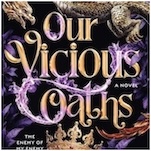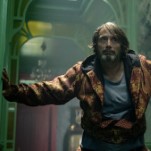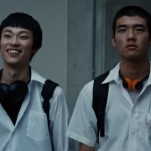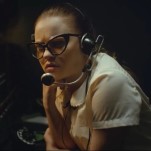The 20 Best Movies on Freevee (March 2025)
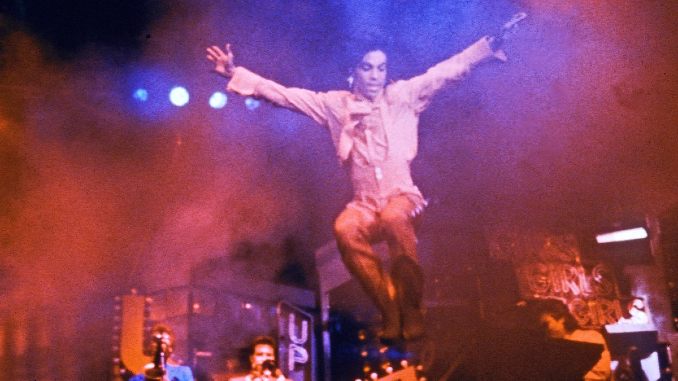
The inner workings of Amazon’s various stream services are an enigma. Not only is Amazon Prime Video slowly becoming less worth the hassle to navigate, as its library dwindles in relation to its unwieldy user interface, but its acquired AVOD service, IMDbTV, has been rebranded. The ad-driven, free-to-watch streamer (which is where many Prime Video titles were landing as they left the paid service) is now Freevee, one of the funniest names for a way to watch things since Quibi. At least Freevee’s portmanteau is relatively clear: The best movies on Freevee are, as you might expect, free!
As Amazon begins fully marching back to the world of commercial breaks, there’s still plenty to love on its AVOD service, regardless of what it’s called. IDMbTV used to be one of the more reliable and varied sections of our larger Best Free Movies streaming list, and it seems—at least initially—that Freevee will follow suit. Additionally, there’s been rumblings that there’ll be Freevee exclusives coming down the pike too, though other AVOD services’ originals haven’t exactly been stellar (looking at you, Tubi’s Titanic 666). But why not give Freevee a try before it changes its name again?
Here are the 20 best movies on Freevee:
1. Hundreds of Beavers
Year: 2024
Director: Mike Cheslik
Stars: Ryland Brickson Cole Tews, Olivia Graves, Wes Tank
Rating: NR
Hundreds of Beavers is a lost continent of comedy, rediscovered after decades spent adrift. Rather than tweaking an exhausted trend, the feature debut of writer/director Mike Cheslik is an immaculately silly collision of timeless cinematic hilarity, unearthed and blended together into something entirely new. A multimedia extravaganza of frozen idiocy, Hundreds of Beavers is a slapstick tour de force—and its roster of ridiculous mascot-suited wildlife is only the tip of the iceberg. First things first: Yes, there are hundreds of beavers. Dozens of wolves. Various little rabbits, skunks, raccoons, frogs and fish. (And by “little,” I mean “six-foot stuntmen in cheap costumes.”) We have a grumpy shopkeeper, forever missing his spittoon. His impish daughter, a flirty furrier stuck behind his strict rage. And one impromptu trapper, Jean Kayak (co-writer/star Ryland Brickson Cole Tews), newly thawed and alone in the old-timey tundra. Sorry, Jean, but you’re more likely to get pelted than to get pelts. With its cartoonish violence and simple set-up comes an invigorating elegance that invites you deeper into its inspired absurdity. And Hundreds of Beavers has no lack of inspiration. The dialogue-free, black-and-white comedy is assembled from parts as disparate as The Legend of Zelda, Charlie Chaplin’s The Gold Rush, JibJabs, Terry Gilliam animation, Guy Maddin and Jackass. Acme is namechecked amid Méliès-like stop tricks and Muppety puppetry, while its aesthetic veers from painting broad violence upon a sparse snowy canvas to running through the shadowy bowels of an elaborate German Expressionist fortress. Guiding us through is Tews. He’s a wide-eyed mime with a caricatured lumberjack body, expertly gauging his expressions and sacrificing his flesh for the cause. His performance takes a little from the heavy-hitters of the form: The savvy romanticism of Harold Lloyd, the physical contortions of Buster Keaton, the underdog struggles of Charlie Chaplin, and the total bodily commitment of all three. You don’t get great physical comedy accidentally. Just as its intrepid idiot hero forges bravely on despite weathering frequent blows to the head, impaled extremities and woodland beatings, Hundreds of Beavers marches proudly towards the sublime transcendence of juvenilia. In its dedication to its own premise, Hundreds of Beavers reaches the kind of purity of purpose usually only found in middle-school stick-figure comics or ancient Flash animations—in stupid ideas taken seriously. One of the best comedies in the last few years, Hundreds of Beavers might actually contain more laughs than beavers. By recognizing and reclaiming the methods used during the early days of movies, Mike Cheslik’s outrageous escalation of the classic hunter-hunted dynamic becomes a miraculous DIY celebration of enduring, universal truths about how we make each other laugh.–Jacob Oller
2. Fargo
Year: 1996
Director: Ethan Coen, Joel Coen
Stars: Frances McDormand, William H. Macy, Steve Buscemi
Rating: R
Runtime: 98 minutes
In exploring the unsavory implications of “Minnesota nice,” the Coen Brothers created one of the most beloved, acclaimed and quotable films of all time. Fargo explores the tension that accompanies polite social norms and the quiet desperations they often mask, setting up one scene after another so awkward it’ll make your skin crawl. The emotional restraint displayed by such characters as Jerry Lundegaard (William H. Macy) and Mike Yanagita (Steve Park) is a thin and disingenuous veil over yearnings for money or companionship, while their foil, obviously, is Marge Gunderson (Frances McDormand), who really is that nice and hardworking and downright normal. The Coens strike a careful balance between gentleness and a stark gruesomeness underneath a typical all-American veneer, making you appreciate the art behind postage stamps as deeply as they make you cringe at the sound of a wood chipper. —Allie Conti
3. Evil Dead 2
Year: 1987
Director: Sam Raimi
Stars: Bruce Campbell, Sarah Berry, Dan Hicks, Kassie Wesley, Richard Domeier
Rating: R
On the surface, Evil Dead 2 is essentially a remake of the first 1981 Evil Dead: Sam Raimi going back to an idea he clearly enjoyed with a bigger budget and more experience to “get it right” by upping the ante of the original. But Raimi also offers up some tweaks that fundamentally alter the nature and tone of the first film, changing the recipe from “horror with occasional moments of black comedy” to a more even mix of both that still doesn’t skimp on scares or guts. Bruce Campbell as Ash goes from being almost a passive “final girl” character in the first film to a much more capable, wisecracking hero right from the get-go, and significantly more of the film features him in a tour-de-force solo performance, which helps make Evil Dead 2 one of the most tightly paced horror films ever. It wastes no time, going straight into its comic violence within the first 10 minutes and never letting up. It’s a film indicative of the changing attitude toward zombies–at this point in the late ’80s it’s becoming rare that zombies are ever treated as simply “scary.” More and more frequently, they’re instead incorporated into madcap comedies and action films à la Evil Dead, and this is a trend that continued through the ’90s. —Jim Vorel
4. Charade
Year: 1963
Director: Stanley Donen
Stars: Audrey Hepburn, Cary Grant, Walter Matthau
Audrey Hepburn was closely associated with Stanley Donen through his genre-making directorial career, serving as the ideal shape to enact all his chic, balletic blocking. But Hepburn’s turn in Charade is markedly different from her performances in Funny Face or Two for the Road; in Charade she is embodying and mocking the Hitchcockian muse with an otherwise unseen wryness. With Cary Grant (in their only on-screen collaboration), the central duo use their physical prowess, influenced by their pre-acting work (Hepburn’s as a dancer, Grant’s as a performer on the vaudeville circuit) to lean into the hijinks that pepper this mystery. Charade is a genuinely thrilling satire, one adorned with Audrey Hepburn’s deliciously bitchy commentary. –Anna McKibbin
5. The Pianist
Year: 2002
Director: Roman Polanski
Stars: Adrien Brody, Emilia Fox, Thomas Kretschmann, Maureen Lipman, Ed Stoppard
Rating: R
While many great performances rely on dramatic and affecting dialogue, Adrien Brody’s turn as real life musician Wladyslaw Szpilman in Roman Polanski’s Holocaust drama The Pianist is hushed, a sullen-eyed lost soul hanging on to a world cloaked in gray. As the title character, Brody became a living skeleton, an all-too-real representation of one of history’s darkest periods. —Justin Jacobs
6. An American Werewolf in London
Year: 1981
Director: John Landis
Stars: David Naughton, Jenny Agutter, Griffin Dunne, John Woodvine
Rating: R
Few directors have ever displayed such an innate tact for combining dark humor and horror the way John Landis does. At the height of his powers in the early ’80s, one year removed from The Blues Brothers, Landis opted for a much dirtier, grittier, scarier story that stands as what is still the best werewolf movie of all time. When two travelers backpacking across the English moors are attacked by a werewolf, one is killed and the other infected with the wolf’s curse. Haunted by the simultaneously unnerving and hilarious visions of his dead friend, he must decide how to come to terms with the monster he has become, even as he strikes up a relationship with a beautiful nurse played by Jenny Agutter. The film lulls you into comfort with its witticism before springing shocking, gory dream sequences on the viewer, which repeatedly arrive unannounced. The key moment is the protagonist’s incredibly painful, traumatic full transformation, set to the crooning of Sam Cooke doing “Blue Moon,” which is still unsurpassed in the history of the genre. Legendary FX and monster makeup artist Rick Baker took home the first-ever Academy Award for For Best Makeup and Hairstyling for creating a scene that has given the wolf-averse nightmares ever since. – Jim Vorel
7. The Vast of Night
Year: 2019
Director: Andrew Patterson
Starring: Sierra McCormick, Jake Horowitz
Rating: PG-13
The Vast of Night is the kind of sci-fi film that seeps into your deep memory and feels like something you heard on the news, observed in a dream, or were told in a bar. Director Andrew Patterson’s small-town hymn to analog and aliens is built from long, talky takes and quick-cut sequences of manipulating technology. Effectively a ‘50s two-hander between audio enthusiasts (Sierra McCormick and Jake Horowitz playing a switchboard operator and disc jockey, respectively) the film is a quilted fable of story layers, anecdotes and conversations stacking and interweaving warmth before yanking off the covers. The effectiveness of the dusty locale and its inhabitants, forged from a high school basketball game and one-sided phone conversations (the latter of which are perfect examples of McCormick’s confident performance and writers James Montague and Craig W. Sanger’s sharp script), only makes its inevitable UFO-in-the-desert destination even better. Comfort and friendship drop in with an easy swagger and a torrent of words, which makes the sensory silence (quieting down to focus on a frequency or dropping out the visuals to focus on a single, mysterious radio caller) almost holy. It’s mythology at its finest, an origin story that makes extraterrestrial obsession seem as natural and as part of our curious lives as its many social snapshots. The beautiful ode to all things that go [UNINTELLIGIBLE BUZZING] in the night is an indie inspiration to future Fox Mulders everywhere. —Jacob Oller
8. Southern Comfort
Year: 1981
Director: Walter Hill
Stars: Martin Lawrence, Will Smith, Anna Thomson
Rating: R
Despite being one of the originators of 1979’s Alien (doing an uncredited and highly impactful treatment on the script, and shepherding the franchise as writer and producer through several films), Walter Hill has never made a straight-up horror film. Southern Comfort is the closest he’s gotten, and the white-knuckle tension here is bound to put more lumps in your throat and knots in your stomach than just about anything else you can find. Set in 1973, we follow a squad of Louisiana Army National Guardsmen (including Keith Carradine, Powers Boothe, Fred Ward and Peter Coyote) on a routine weekend maneuver who, through hubris and immaturity, antagonize a group of Cajuns native to the swampland they’re occupying. With only dummy ammunition at their disposal, the men are placed in dire circumstances as they fight to survive against folks who know how to utilize the land as a weapon. Its themes—American invaders corrupted by their exceptionalism into thinking they had some sort of ownership over land that doesn’t belong to them, only to be met with resistance from a native opposition much wiser and more capable than the Americans assumed them to be—led to immediate assumptions that Southern Comfort was a metaphor for Vietnam. Hill vehemently rejects this, stating, “People are going to say this is about Vietnam. They can say whatever they want, but I don’t want to hear another word about it.” While the comparisons are obvious, Hill also has a point: This sort of narcissistic egotism and colonizer mentality isn’t solely exemplified by the Vietnam War. It’s firmly on display throughout American history, present and future. Southern Comfort was a notoriously tough shoot for its cast and crew, as these characters traverse through a marshland that’s attacking them at every turn. With inept leadership and undisciplined subordinates, Southern Comfort presents us not a virtuous squadron of American military heroes, but a foolish gang of hooligans who get what’s coming to them. It’s a film which exemplifies Hill’s skills as an action director, with masterful cross-cutting to keep the tension at a fever pitch, slowly burning as the situation starts dire and somehow keeps getting worse. If Streets of Fire has the greatest opening of Hill’s career, Southern Comfort has the strongest ending, with a final section in which the surviving soldiers think they’ve found salvation when they hitch a ride into a small Cajun community barbecue only to slowly realize this is the biggest trap of all. Nerve-shredding filmmaking at its finest.–Mitchell Beaupre
9. Lake Mungo
Year: 2008
Director: Joel Anderson
Stars: Talia Zucker, Rosie Traynor, David Pledger
Rating: R
And speaking of found footage, here’s another entry in the genre that has had considerably more positive critical attention. Lake Mungo could scarcely be more different from something like Grave Encounters–there are no ghosts or demons chasing screaming people down the hall, and it’s chiefly a story about family, emotion and our desire to seek closure after death. You could call it a member of the “mumblegore” family, without the gore. It centers around a family that has been shattered by a daughter’s drowning, and the family’s subsequent entanglement in what may or may not be a haunting, and the mother’s desire to determine what kind of life her daughter had been living. Powerfully acted and subtly shot, it’s a tense (if grainy) family drama with hints of the supernatural drifting around the fraying edges of their sanity. If there’s such a thing as “horror drama,” this documentary-style film deserves the title. —Jim Vorel
10. Prince: Sign ‘o’ the Times
Year: 1987
Directors: Prince, Albert Magnoli
Stars: Prince
Rating: PG-13
Prince’s 1987 concert documentary is one hour and 24 minutes of a generation’s greatest musical performer at the peak of his career (sorry, Boss). With his touring band that included Sheila E. on drums, Miko Weaver on guitar, Levi Seacer Jr. on bass, Eric Leeds on sax, Boni Boyer and Dr. Fink on keyboards, and Cat Glover dancing, the film pulls mostly from his 1987 double-album Sign O’ the Times, with hits like the title track, a piano interlude of “Little Red Corvette” and “U Got the Look.” It was filmed at two European shows, but much of the music was re-recorded later at Paisley Park. Still, it has an urgency that only Prince can deliver, in multiple outfits, of course. Released theatrically in the States, the film received more love after it left theaters. Now it’s one of the best ways to see what the big deal is about a Prince concert. —Josh Jackson
11. King of New York
Year: 1990
Director: Abel Ferrara
Stars: Christopher Walken, Laurence Fishburne, David Caruso
Rating: R
Abel Ferrara’s modern day take on Robin Hood transposes the crusader of the common man to the scum-infested streets of the Big Apple, where Christopher Walken’s formerly incarcerated drug lord Frank White returns to his old stomping ground. His strategy for social (and personal) reform: Eliminate competing kingpins and their rackets, and channel profits to the lower classes while funding a hospital in the South Bronx. A win/win, albeit a perverted one, right? Except that we know better. When the cops (David Caruso and Wesley Snipes among them) are just as morally flexible as the crooks (as Walken’s associate, “Larry” Fishburne is unhinged), none of these figures on the margins are going to wind up any closer to a fighting chance. As unapologetic judge and jury, Walken is never better, nor cooler: “I must’ve been away too long because my feelings are dead. I feel no remorse,” he states flatly. B-movie vet Ferrara (Ms .45, China Girl) revels in the extremes in textures, juxtaposing the inner city guts and grime with the blinged-out glamour of White’s penthouse lifestyle—this gangster film wound up a gangsta touchstone for ’90s hip-hop. King of New York’s standing on this list could arguably be swapped with Ferrara’s even more corrosive follow-up two years later, Bad Lieutenant, another pitch-black fable about attempts at redemption gone spectacularly awry—it’s hardly surprising that, exceptional as Harvey Keitel was in the 1992 film, the lead role was originally intended for Walken. —A.S.
12. Battle Royale
Year: 2000
Director: Kinji Fukasaku
Stars: Tatsuya Fujiwara, Aki Maeda, Tarô Yamamoto
Rating: R
It’s OK to compare Battle Royale to The Hunger Games movies—or, rather, to find how the lasting accomplishments of the latter franchise were essentially done better and with so much more efficiency by the former—because you probably will anyway. Battle Royale, like the immensely successful four-film crash course in crafting an action star who is really only a symbol of an action star, chronicles a government-sanctioned battle to the death between a group of teens on a weird, weapon-strewn island. (There are even regular island-wide announcements of the day’s dead as the sun sets on the remaining children.) Yet, Battle Royale is so lean in its exposition, so uninterested in dragging out its symbolism or metaphor, that one can’t help but marvel at how cleanly Fukasaku (who had a full career behind him when he made this, only three years before he died) can lend depth to these children, building stakes around them to the point that their deaths matter and their doomed plights sting. What the director can do with such a tenuous premise (which The Hunger Games takes multiple films to do, and without a single ounce of levity) is astounding—plus, he wrangled Beat Takeshi Kitano to play the President Snow-type character, which Kitano does to near-perfection. That Battle Royale II sets out to up the stakes of the first film, especially given the first film’s crazy success in Japan, is to be expected, but stick to the first: Battle Royale will make you care about kids murdering each other more than you (probably) would anyway. —Dom Sinacola
13. The Lost City of Z
Year: 2017
Director: James Gray
Stars: Charlie Hunnam, Robert Pattinson, Sienna Miller
Rating: PG-13
James Gray’s The Lost City of Z is an anti-period movie. In the vein of The Immigrant, Gray’s glorious last film, Z is fascinated with its milieu (this time we begin across the Atlantic in Blighty, from 1906 to 1925) and luxuriously adorned with period detail—but the strangulated social climate and physically claustrophobic spaces of its ostensibly sophisticated Western society make that environment appear totally unappealing. Only once we reach the Amazon, untainted by Western hands, does the film relax, its beguiling score and open-air scenery turning inviting. There, in a land of uncomplicated tribes and indifferent wilderness, a man like soldier and explorer Major Percy Fawcett (Charlie Hunnam) can find freedom from the narrow-mindedness infecting early 20th century Britain. Darius Khondji’s cinematography doesn’t just complement Gray’s movie, it deepens its meaning, strengthening the appeal of Fawcett’s jungle, endlessly verdant and mysterious where home in England appears dull and monotone. Every frame is sumptuous and misty-eyed, always pining for a lost era when adventurers might still find corners of the Earth completely untouched. (Gray may show little love for Empire, but he depicts colonial exploration in itself as a romantic adventure.) The film doesn’t make for much complexity, but it feels deeply. Like Fawcett, it aches—like his obsession, the jungle, it envelops, casting a lasting spell. —Brogan Morris
14. The Texas Chain Saw Massacre
Year: 1974
Director: Tobe Hooper
Stars: Marilyn Burns, Paul A. Partain, Edwin Neal, Jim Siedow, Gunnar Hansen
Rating: R
One of the most brutal mainstream horror films ever released, The Texas Chain Saw Massacre, based on notorious Wisconsin serial killer Ed Gein, resembles art-house verité built on the grainy physicality of its flat Texas setting. Plus, it introduced the superlatively sinister Leatherface, the iconic chainsaw-wielding giant of a man who wears a mask made of human skin, whose freakish sadism is upstaged only by the introduction of his cannibalistic family with whom he resides in a dilapidated house in the middle of the Texas wilderness, together chowing on the meat Leatherface and his brothers harvest, while Grandpa drinks blood and fashions furniture from victims’ bones. Still, The Texas Chain Saw Massacre might not be the goriest horror film ever made, but as an imaginal excavation of the subterranean anxieties of a post-Vietnam rural American populace, it’s pretty much unparalleled. Twisted, dark and beautiful all at once, it careens through a wide variety of tones and techniques without ever losing its singular intensity. (And there are few scenes in this era of horror with more disturbing sound design than the bit where Leatherface ambushes a guy with a single dull hammer strike to the head before slamming the metal door shut behind him.) —Rachel Haas and Brent Ables
15. The Cabin in the Woods
Year: 2011
Director: Drew Goddard
Stars: Kristen Connolly, Chris Hemsworth, Anna Hutchison, Fran Kranz, Jesse Williams, Richard Jenkins, Bradley Whitford, Sigourney Weaver
Rating: R
The gag here is that a group of young people—who loosely fall into a variety of slasher movie archetypes such as “the virgin,” “the fool” and “the athlete,”—are manipulated into a life-or-death scenario that also serves as a proxy battle for all of humanity. This “ritual,” we come to understand, is orchestrated from an underground bunker full of comically unsympathetic white collar workers who bend the rules of this contest as far as they possibly can, and for good reason: If the hapless protagonists “upstairs” manage to survive, the entire world will be devoured by ancient gods who will rise from below. Only the appeasement of horror film cliches will keep the ancient evil below slumbering for another year. That framework is an excuse to pick apart the silliest (and most beloved) aspects of horror movie tropes. The monsters and antagonists likewise draw inspiration from countless horror franchises: Evil Dead, Hellraiser, It, Chopping Mall, The Wolf Man. It’s a loving assembly of sinister, familiar cinematic imagery that has been corralled and controlled in a way that paints mankind as the ultimate evil above all others, due for extinction. The Cabin in the Woods remains a high bar against which horror genre parodies are judged. —Jim Vorel
16. Wheels on Meals
Year: 1984
Director: Sammo Hung
Stars: Jackie Chan, Sammo Hung, Yuen Biao
Rating: NR
Wheels on Meals is a silly, silly movie—but damn is its action amazing. Hong Kong trios don’t get better than Jackie Chan, Yuen Biao and Sammo Hung, although Hung’s role in this one is minimal. Rather, everything comes down to some incredible fight scenes featuring Chan and Benny “The Jet” Urquidez, a real-life American kickboxing champion who makes the perfect dance partner for Chan in several high-octane brawls. Their final confrontation isn’t just a great scene, it might be the best one-on-one fight of Chan’s career, with Benny proving he’s Jackie’s match. In fact, it’s The Jet who pulls off one of the coolest fight scene feats I’ve ever seen, the supposedly unintentional (and unfaked) “candle kick,” in which a missed spin kick generates such force that it blows out all of the lit candles on a candelabra several feet away. The film’s backbone is a story about a kidnapped Spanish heiress, but its kicks are far more fascinating. —Jim Vorel
17. The Invisible Man
Year: 2020
Director: Leigh Whannell
Starring: Elisabeth Moss, Oliver Jackson-Cohen, Harriet Dyer, Aldis Hodge, Storm Reid, Michael Dorman
Rating: R
Aided by elemental forces, her exquisitely wealthy boyfriend’s Silicon Valley house blanketed by the deafening crash of ocean waves, Cecilia (Elisabeth Moss) softly pads her way out of bed, through the high-tech laboratory, escaping over the wall of his compound and into the car of her sister (Harriet Dyer). We wonder: Why would she run like this if she weren’t abused? Why would she have a secret compartment in their closet where she can stow an away bag? Then Cecilia’s boyfriend appears next to the car and punches in its window. His name is Adrian Griffin (Oliver Jackson-Cohen), and according to Cecilia, Adrian made a fortune as a leading figure in “optics” (OPTICS!) meeting the self-described “suburban girl” at a party a few years before. Never one to be subtle with his themes, Leigh Whannell has his villain be a genius in the technology of “seeing,” in how we see, to update James Whale’s 1933 Universal Monster film—and H.G. Wells’ story—to embrace digital technology as our primary mode of modern sight. Surveillance cameras limn every inch of Adrian’s home; later he’ll use a simple email to ruin Cecilia’s relationship with her sister. He has the money and resources to peer into any corner of Cecilia’s life. His gaze is unbroken. Cecilia knows that Adrian will always find her, and The Invisible Man is rife with the abject terror of such vulnerability. Whannell and cinematographer Stefan Duscio have a knack for letting their frames linger with space, drawing our attention to where we, and Cecilia, know an unseen danger lurks. Of course, we’re always betrayed: Corners of rooms and silhouette-less doorways aren’t empty, aren’t negative, but pregnant with assumption—until they aren’t, the invisible man never precisely where we expect him to be. We begin to doubt ourselves; we’re punished by tension, and we feel like we deserve it. It’s all pretty marvelous stuff, as much a well-oiled genre machine as it is yet another showcase for Elisabeth Moss’s herculean prowess. —Dom Sinacola
18. Escape From New York
Year: 1981
Director: John Carpenter
Stars: Kurt Russell, Lee Van Cleef, Adrienne Barbeau, Donald Pleasence, Ernest Borgnine, Isaac Hayes
Rating: R
In the far future of 1997, when the president’s Air Force One flight is hijacked and crash-lands in the now-maximum security prison of Manhattan, there’s only one man who can save him, a one-eyed Kurt Russell who goes by the name of Snake. He struggles to thwart The Duke’s plans to use the President as a human shield in his march to freedom, all while maintaining his badass disdain for the US government. Written in the wake of the Watergate scandal, John Carpenter’s view of the future is a decidedly cynical one: Snake may be trying to save the president, but not without his classic sneer. —Sean Doyle
19. The Mist
Year: 2007
Director: Frank Darabont
Stars: Thomas Jane, Marcia Gay Harden, Laurie Holden
Rating: R
A lot of the monsters and ghosts that terrorize a large and diverse group of protagonists in King’s work are excuses to deliver deft sociological studies on how easily members of a “civilized” society can toss out their polite and calm pretensions and let their reptilian brains, infused with fear and paranoia, take over in order to do horrific shit in the name of individual survival. From The Stand all the way to sub-par material like Trucks, there are many examples of this approach, but none are executed as efficiently and satisfyingly as Frank Darabont’s take on The Mist, King’s tale of a bunch of normal townsfolk gradually turning into a death cult when they’re trapped inside a grocery store after a mysterious mist that harbors a bunch of not-so-friendly monsters covers their town. The leader of the cult is the crazy, bible-thumping zealot played by Marcia Gay Harden, who’s mocked by others as she spews a bunch of apocalyptic bible verses but becomes a more and more credible voice, much to the chagrin of the more logic-based intellectual minority, as the creatures slither closer and closer to annihilating everyone. Thus a microcosm of our contemporary world is intricately mirrored, with a majority of weak minds ruled by fear, and the minority of levelheaded individuals powerless to stop the madness. Even if we were to take out the societal symbolism of the story, The Mist would still work as a terrific 1950s style monster flick that would have made William Castle drool. The shocking ending is a big plus or minus, depending on how much you like being traumatized by a work of fiction. —Oktay Ege Kozak
20. Robot Carnival
Year: 1987
Director: Various
Silent animated shorts set to dramatic orchestral music, commonly known as Silly Symphonies, were all the rage in America throughout the 1920s and ’30s. Perhaps the most famous example from this era of animation was Fantasia, produced by Walt Disney and released to critical acclaim in 1940. Robot Carnival is anime’s answer to that film, a collection of nine short films produced by nine of the most esteemed anime directors and character designers of their time. For sure, not every short shines as a pillar of canonical greatness, e.g., Hiroyuki Kitazume’s “Starlight Angel” or Hidetoshi Omori’s “Deprive.” But when a short does shine, it’s a sight to behold. Koji Morimoto’s “Franken’s Gear” is a brilliant choice for an opener, while Manabu Ohashi’s “Cloud” is a melancholic gem that memorably experiments through the use of scratchboard animation. Hiroyuki Kitakubo’s “Strange Tales of Meiji Machine Culture: Westerner’s Invasion” is a imaginative take on the Giant Robot subgenre that’s as ridiculous as its name, and Takashi Nakamura’s “Chicken Man and Red Neck” is the true anime analog to Fantasia’s iconic “Night on Bald Mountain.” Even if Robot Carnival was not an awesome collection—and it is—it would still be a remarkable timestamp of when a constellation of talented young director align to create a project born completely out of a love for the medium.—Toussaint Egan
















